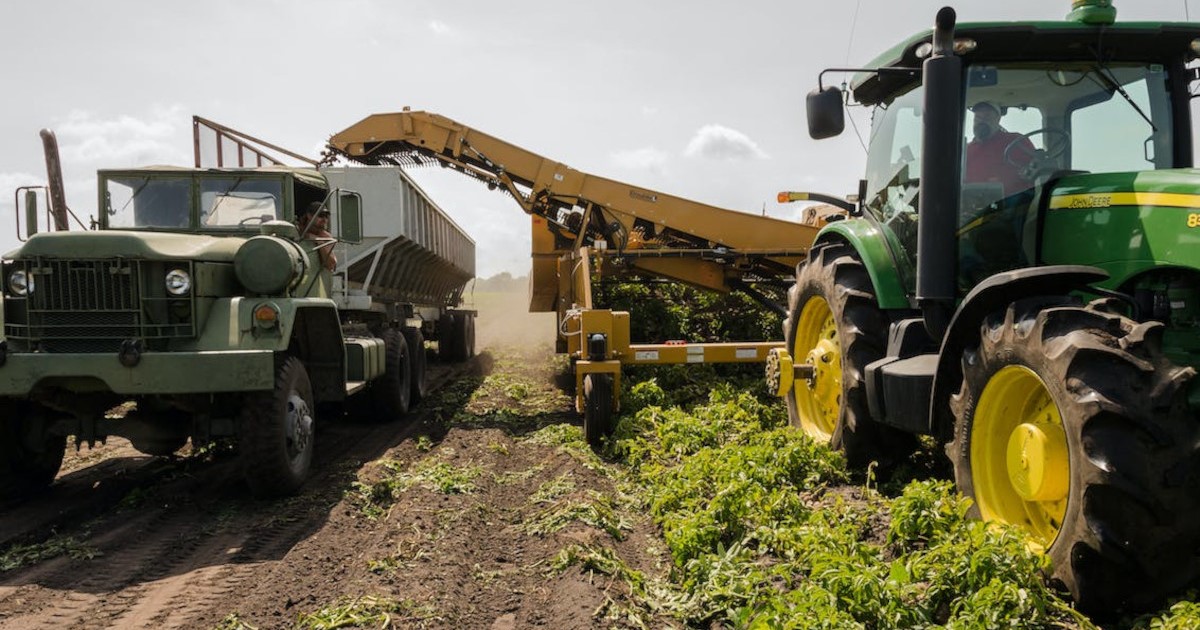The rapid pace of globalization has meant that our tables are full of foods from different corners of the world. Behind every fresh vegetable, grain, or fruit, there’s a story of transportation, especially when considering the unique needs of agricultural products.
For entrepreneurs in agriculture, understanding these specifics isn’t just about ensuring goods reach their destination but ensuring they achieve the best possible condition. This article delves deep into the intricacies of transporting agricultural products, understanding the options available, and evaluating potential risks.

Understanding the unique needs of agricultural goods
Agricultural products, by their very nature, are perishable. When you harvest them, the clock is ticking. Some products, like fresh vegetables or dairy, have a limited shelf life and require rapid transportation. In contrast, others, such as grains, can withstand longer transport times if stored correctly.
- Perishability: This is the fundamental factor separating agricultural goods from other products. A few hours delay can render a shipment of fresh produce worthless.
- Sensitivity to environmental conditions: Agricultural products are sensitive to temperature, humidity, and light. A shipment of bananas, for instance, can be ruined if exposed to freezing temperatures.

Evaluating transportation options
In the vast domain of agriculture, the journey from farm to table involves multiple logistical considerations. For the entrepreneur or the producer, the onus is harvesting quality produce and ensuring that it reaches consumers in optimal condition.
Here, the choice of transportation becomes a pivotal decision. While speed, cost, and distance play their roles, the nature of the agricultural product often dictates the best mode of transport.
From the icy chambers of refrigerated trucks to the vast containers of rail transport, let’s dive into the array of transportation options available and dissect their advantages and limitations.
- Refrigerated trucks: Essential for transporting fresh produce, dairy products, and other perishables. They maintain a controlled environment, ensuring products stay fresh.
- Standard trucks: Suitable for goods like grains, which aren’t as sensitive to temperature fluctuations but still require protection from elements like rain.
- Rail transport: This can be economical for bulk products like grains or cereals when transporting long distances.
Assessing risks in agricultural goods transportation
Regarding the transportation of agricultural goods, the stakes are exceptionally high. A single oversight can lead to significant financial losses and damage to the reputation of suppliers and farmers.
Though rewarding, transporting agricultural goods is full of intricate challenges. A 360-degree perspective is crucial. Let’s dive deep into the multitude of risks that lurk in this sector.
Spoilage and contamination
- Temperature sensitivity: Agricultural products, especially perishables like fruits, vegetables, and dairy, are highly sensitive to temperature fluctuations. A malfunctioning refrigeration unit or prolonged exposure to high temperatures can render an entire shipment unfit for consumption.
- Cross-contamination: When you transport different products together, there’s a risk of cross-contamination. For instance, strong-smelling items like onions can affect the flavor and aroma of other goods nearby, such as apples.
- Pests and infestation: A shipment might start pest-free but is not immune. Poorly sanitized vehicles or contaminated packaging can lead to infestations, compromising the integrity of the goods.
Delays and disruptions
- Traffic and route Issues: Accidents, roadworks, or natural calamities can lead to unexpected delays. In agricultural transport, every hour counts, especially for items with a short shelf life.
- Documentation delays: Incorrect or incomplete paperwork can halt shipments, especially at international borders. These delays can be detrimental for perishable goods awaiting clearance.
Regulatory hurdles and compliance
- Stringent import/export regulations: Different countries have varied regulations regarding the import of agricultural products. Any oversight related to pesticide levels or origin documentation can result in costly fines and shipment rejections.
- Safety standards: Many nations have strict safety standards for agricultural imports to protect their ecosystems and native species. Any threat, like invasive pests or diseases, can lead to immediate quarantine or destruction of the shipment.
- Tariffs and trade agreements: Rapidly changing trade landscapes, with new agreements or tariffs, can impact the cost-effectiveness of shipments. Being unaware can result in unanticipated expenses.
Financial implications
- Fluctuating fuel costs: The unpredictable nature of fuel prices can escalate transportation costs without warning, affecting the profitability of shipments.
- Insurance limitations: Not all insurance covers are exhaustive. Some clauses might exclude certain damages or situations, leaving transporters and farmers vulnerable to unforeseen expenses.
While the road of transporting agricultural goods is fraught with challenges, foreknowledge is a powerful tool. By understanding these risks, one can deploy measures to mitigate them, ensuring that the fresh produce reaches its destination and does so in prime condition.
Trending technologies in agricultural goods transport
With technological advancements, the transportation sector has seen innovative solutions, especially beneficial for agricultural products.
- IoT in transport: IoT devices can monitor temperature, humidity, and even the ripeness of goods in real time, ensuring they’re in optimal conditions.
- Blockchain in supply chain: This provides transparency in the supply chain, giving consumers an understanding of where their food comes from.
Conclusion
The transportation of agricultural goods is a dance of precision, understanding, and innovation. For the agriculturists and entrepreneurs of today’s age, a grasp on these nuances doesn’t just promise better business but a commitment to delivering the best to the end consumer.
As we continue to traverse this global landscape, let’s ensure our agricultural products get the care and attention they deserve. Stay tuned with amoplant.lv for more insights.


